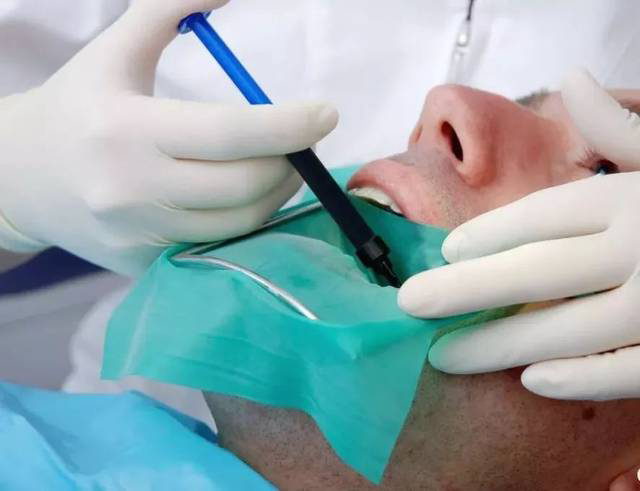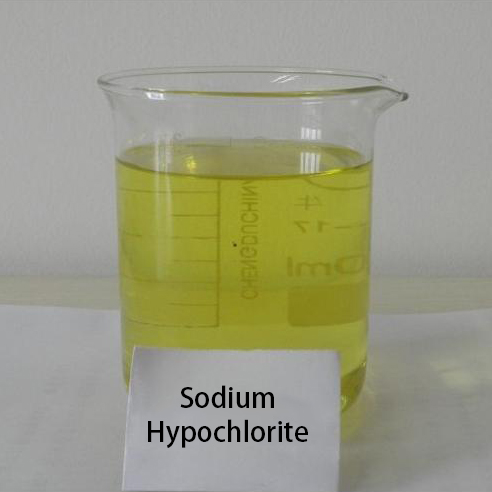Sinoright Blog
Protection and Precautions of Sodium Hypochlorite
About sodium hypochlorite
Sodium hypochlorite is the most commonly used root canal irrigation solution due to its antibacterial ability and ability to quickly dissolve organic components in necrotic tissue, pulp tissue, dentin, and biofilm. The earliest hypochlorite was manufactured in France in 1789 and then used as a disinfectant in hospitals. During World War I, Dakin suggested using 0.5% sodium hypochlorite as the flushing solution. Coolidge then introduced sodium hypochlorite as a flushing solution for pulp treatment.

When sodium hypochlorite comes into contact with tissue proteins and nitrogen-containing substances, it forms formaldehyde and acetaldehyde, replacing the hydrogen ions in the amino group (- NH -) with chloride ions to form chloramine, which plays an important role in its antibacterial activity. Necrotic tissue and pus are dissolved, and antibacterial components can better reach and clear the infected area.
The effect of sodium hypochlorite is mainly exerted through saponification reaction, neutralization reaction, hypochlorite formation, dissolution, and formation of high pH value.
There are few reports of allergic reactions to sodium hypochlorite, and true allergic reactions to Na and Cl are rare because they are essential elements for the human body. Hypochloric acid can cause purulent reactions caused by neutrophils, but it does not cause allergic reactions. But in rare cases, hypersensitivity reactions and contact dermatitis can occur. There is a case report of a doctor's eye being chemically burned by 3.5% sodium hypochlorite root canal irrigation solution.
For patients with allergic constitution, skin tests can be conducted. NaOCl and CHX can be used. If allergic, use other irritants such as alcohol or distilled water, which have much lower ability to resist biofilms and dissolve necrotic tissue, but calcium hydroxide is also a viable option.
Heating can promote the tissue dissolution ability of low concentration sodium hypochlorite. The heated hypochlorite solution also has a stronger ability to remove the stain layer from the dentin. But once the solution enters the root canal, its temperature will quickly drop to the same level as body temperature.
The concentration of sodium hypochlorite used for root canal irrigation ranges from 0.5% to 6%. There is debate between suggestions of different concentrations. Some in vitro experiments have shown that higher concentrations of solutions have better antibacterial effects against Enterococcus faecalis and Candida albicans. On the other hand, clinical studies have shown that both low and high concentrations of sodium hypochlorite solutions have a consistent effect on reducing bacteria in the root canal system. High concentrations of sodium hypochlorite have better tissue solubility. But under low concentration conditions, increasing the volume used can also achieve the same effect of tissue dissolution. High concentrations of sodium hypochlorite have greater toxicity. Due to anatomical limitations of the root canal system, high concentrations of sodium hypochlorite were successfully applied in root canal treatment with a lower failure rate. In summary, if low concentration sodium hypochlorite is used for root canal treatment, it is recommended to use more volume and higher flushing frequency.
The combination of instrument preparation and disinfectant irrigation of the root canal can achieve a lower positive rate of bacterial culture compared to individual instrument preparation. However, even with the use of sodium hypochlorite irrigation, the complete removal of bacteria from the root canal system remains an unattainable goal.
There are different reports on the usage time of sodium hypochlorite. Some have found that even low concentrations of sodium hypochlorite can kill target microorganisms within a few seconds, while other reports suggest that it takes longer. The reasons for the differences may be the presence of organic matter in the root canal system, the presence of dentin, etc. Therefore, it is very important to continuously supplement the flushing solution to maintain an appropriate duration of action. The chloride ions, which play a crucial role in tissue dissolution and antibacterial activity, are rapidly consumed during the initial contact with the tissue, approximately 2 minutes. This is also one reason for continuously replenishing the flushing solution. The nickel titanium root canal preparation system accelerates the process of root canal preparation, and the appropriate time for a given concentration of sodium hypochlorite to remain in the root canal system remains to be determined through research.
If sodium hypochlorite is washed out of the apical foramen, it can have serious consequences, including severe pain, swelling of adjacent soft tissues, partial swelling that can extend to the opposite side and upper lip, extensive bleeding in the root canal, significant bleeding of the skin and mucosa, release of chlorine gas that stimulates taste and throat, maxillary sinus injury, possible secondary injury, reversible sensory numbness and sensory abnormalities. Management: Inform patients to use local anesthetics and painkillers to control pain. Local compression cold compress outside the mouth. After one day, apply local heat. The patient undergoes daily follow-up visits. The use of antibiotics is not necessary, only when the risk of secondary infection is high. Antihistamines are not necessary either. There is controversy over whether to use corticosteroids. It is recommended to use physiological saline or chlorhexidine as the irrigation solution for subsequent root canal treatment.
Sodium hypochlorite is toxic
The impact of sodium hypochlorite on the human body is directly proportional to the liquid concentration, liquid volume, and action time. In other words, the higher the concentration, the greater the liquid volume, and the longer the action time, the greater the toxic side effects on the human body.
Toxic side effects are divided into deterministic effects and stochastic effects, acute effects and chronic effects.
When the concentration of sodium hypochlorite exceeds 5%, the toxicity significantly increases with the increase of concentration, which is certain for anyone. Therefore, under the protection of rubber barriers, it is recommended that the concentration of sodium hypochlorite should not exceed 5.25%, otherwise it is a great risk for both doctors and patients.
The so-called random effect refers to the sensitization reaction and carcinogenicity, and the sensitization rate does not increase with the increase of concentration. That is to say, very low concentrations may also cause serious allergic reactions, but an increase in concentration can exacerbate the degree of allergy. At the same time, due to its strong oxidizing properties, this characteristic is sometimes used for bleaching. The vast majority of studies believe that strong oxidizing properties are a factor in carcinogenesis.
The acute effects of sodium hypochlorite mainly manifest as liver and kidney damage, as well as phenomena such as chlorine poisoning. Sodium hypochlorite is prone to redox reactions when heated, and 3ClO - → ClO3-+2Cl - chlorine gas has strong toxicity. If the air contains one thousandth of chlorine gas, it will seriously affect human health. It is generally believed that the maximum content of free chlorine in the air should not exceed 1 milligram per cubic meter. When there is 2.5 milligrams of chlorine gas per liter of atmosphere, it can cause death within a few minutes. Because high concentrations of chlorine can cause vagal reflex cardiac arrest or laryngeal spasm. But this concentration is usually difficult for us to encounter under normal circumstances, so acute effects are relatively rare.
Chronic effects refer to chronic long-term low concentration exposure, which requires dentists to pay attention to protection. Long term low concentration exposure can cause respiratory diseases such as chronic bronchitis and bronchial asthma. It is best to use strong suction on the side when washing to avoid damage to medical staff and patients. In addition, rubber bands are essential and cannot be directly used in the patient's mouth when diluted to 1% -2%. Due to the irritant nature of sodium hypochlorite, direct use in the patient's mouth must be prohibited, which can easily cause mucosal edema, even coughing and suffocation to the respiratory tract... Literature shows that when sodium hypochlorite with a concentration of 0.2% comes into contact with hands, rubber gloves are needed for protection, let alone oral mucosa that is much more sensitive than skin.

Protection and precautions of sodium hypochlorite
Rubber barriers are necessary, otherwise it's better not to use them, safety first.It is best to test for water leakage after the rubber barrier is installed.
After rinsing with sodium hypochlorite, before using sharp instruments such as probes, magnifying needles, and machine covers again, be sure to rinse with plenty of salt water and hydrogen peroxide to avoid scratching the rubber barrier and causing high concentrations of sodium hypochlorite to flow into the mouth. (The translation is not good, that's what it means anyway)
Class II holes must be filled with false walls, and it is recommended to use flowing resin, which has a better sealing effect than cement. Mainly to avoid irritation caused by the outflow of sodium hypochlorite, and to increase the amount of sodium hypochlorite liquid in the medullary cavity and reduce waiting time.
The injection needle for irrigation should be opened on the side and should be loose inside the root canal. Do not apply strong pressure for irrigation, especially if the root canal opening is damaged. Once sodium hypochlorite is flushed out of the apical foramen, it will cause serious pain and lead to two infections, which will not heal for several years or even more, causing unbearable suffering for patients. There are cases where foreign peers have compensated more than $100000.
Strictly pay attention to the length of the washing needle during shaking, be careful and careful again. Once you encounter one, I believe it will be unforgettable for you for a lifetime.
Many literature has proven the effectiveness of the combined application of EDTA and sodium hypochlorite, but the combined application does not necessarily mean simultaneous application. EDTA mainly relies on chelation with calcium ions, and sodium hypochlorite can prevent this chelation. Therefore, I think simultaneous use is not appropriate. I suggest that the order should be EDTA, sodium hypochlorite, hydrogen peroxide, and finally saline. That is to use sodium hypochlorite to prevent the calcium chelation of EDTA, use the foaming effect of hydrogen peroxide to remove sodium hypochlorite and EDTA, and finally use physiological saline and dry to minimize the stimulation of drug residues on the root tips. However, the good news is that the latest research has shown that the trace amount of sodium hypochlorite released from the apical foramen during normal root canal treatment will not have any impact, so using sodium hypochlorite is safe while taking proper precautions.
